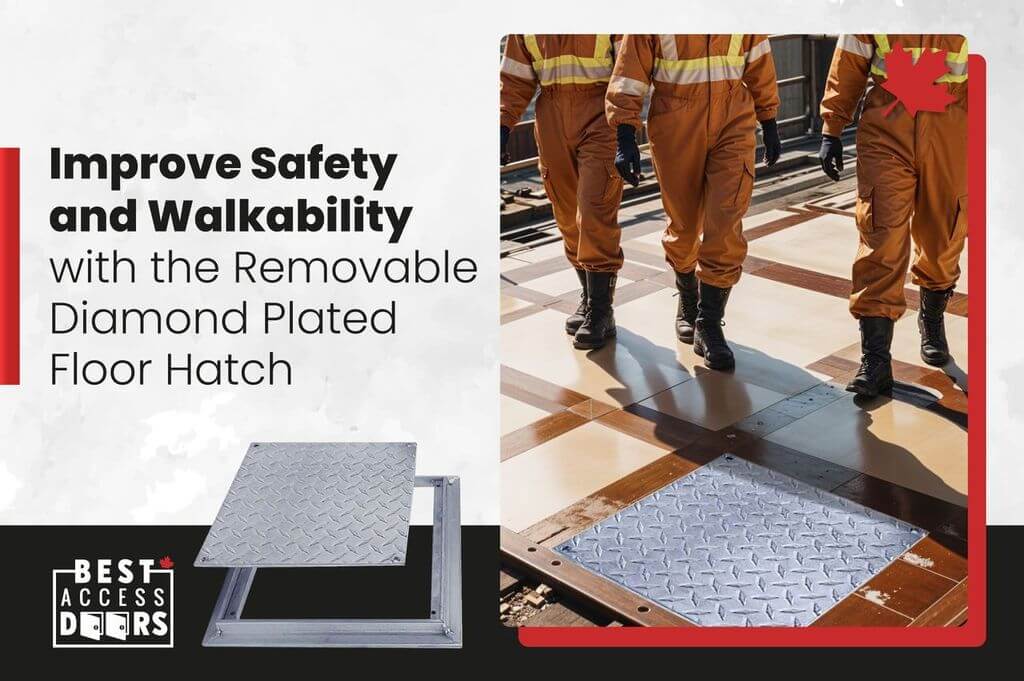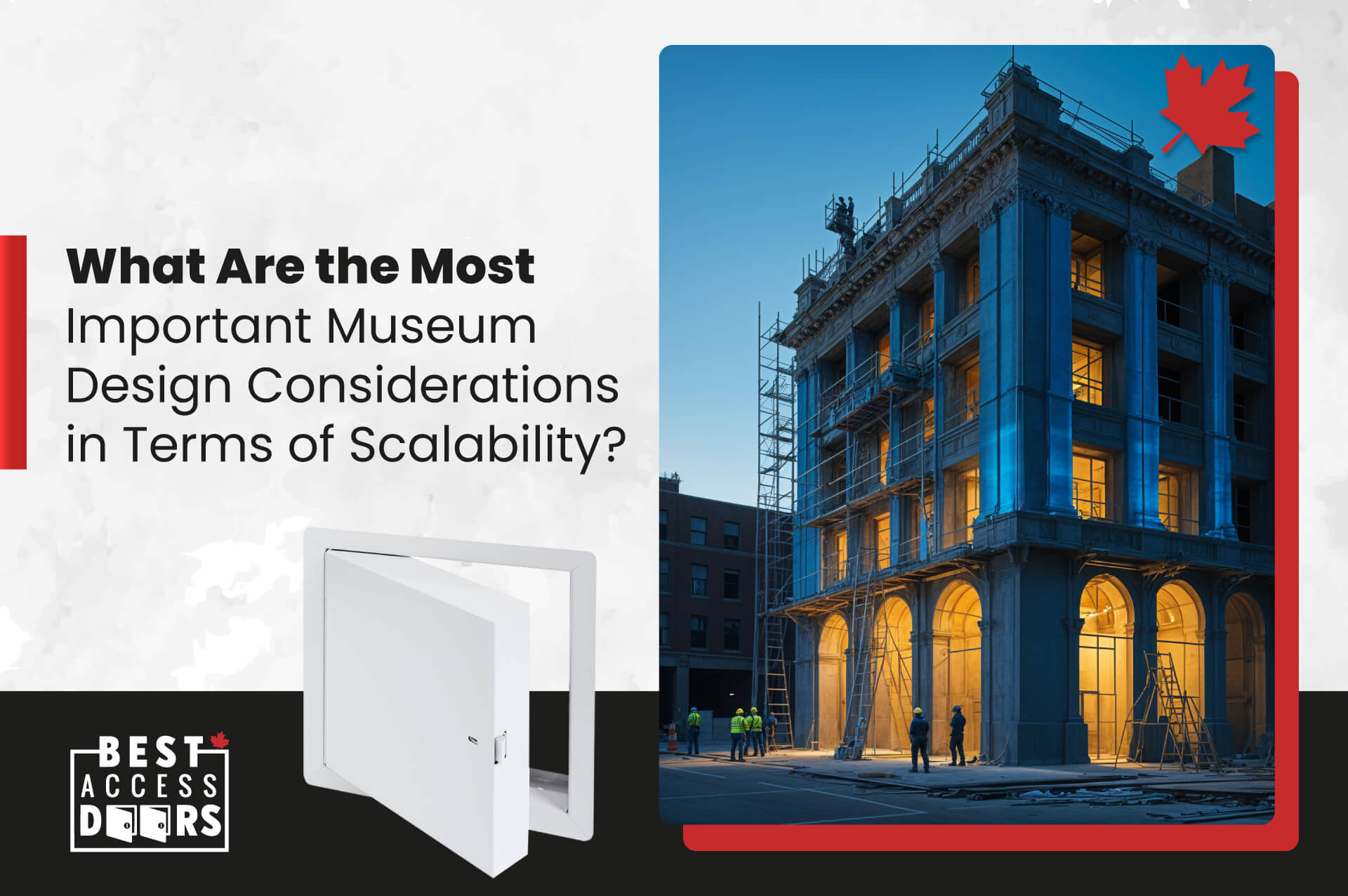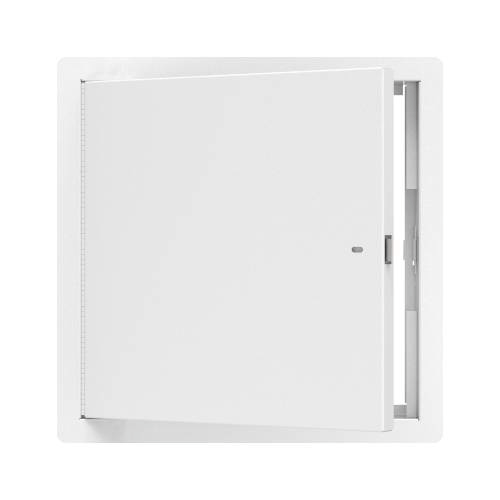The Canadian Guide to Access Panels: Unlocking Essential Insights for Construction Professionals Posted by Best Access Doors - Canada on 7th Sep 2023
When it comes to the intricate construction world, even the most hidden elements need their moment in the spotlight. Access doors, also known as access panels, provide a discreet entry point into concealed spaces within walls and ceilings, granting access to essential systems like HVAC, plumbing, electrical wiring, and more.
In this comprehensive guide tailored for Canadian construction professionals, general contractors, project managers, and commercial building owners, we'll dive into the key aspects of access doors and panels, answering common questions and shedding light on their significance in diverse Canadian construction scenarios.
Access Doors: Revealing the Hidden Secrets
An access door is a discreet opening to spaces behind walls, ceilings, or other concealed areas. These doors are designed to seamlessly integrate into their surroundings, ensuring they are visually unobtrusive while facilitating easy access to vital building systems. From attics and crawl spaces to plumbing and storage, access doors are essential components of both commercial and residential areas across Canada, adapting to the country's varying climatic and construction requirements.
Access Door vs. Access Panel: Unveiling the Distinctions
Though often used interchangeably, access doors and access panels have distinct features that set them apart. Access doors are non-removable and have a hinged door that swings open to about 110-120 degrees. In contrast, access panels are typically constructed from lightweight plastic, have no hinge, and allow for full removal. The choice between the two depends on factors like frequency of use and space constraints.
Navigating the Types of Access Doors
Access doors come in various forms to cater to different construction needs, such as:
1. General-Purpose Access Doors: As the name implies, these doors serve general construction, HVAC, plumbing, and electrical access requirements. Suitable for indoor and outdoor applications, walls, and ceilings, they can be recessed or flush-mounted. General-purpose access doors are versatile with a one-piece frame for easy installation and standard sizing and styles. However, fire-rated access doors are necessary in areas with specific fire safety regulations.
2. Fire-Rated Access Doors: Engineered to withstand fire-related damage, these access doors feature airtight seals to prevent the passage of flames, heat, and smoke. Insulated or non-insulated, these fire-rated access doors adhere to strict standards and are tested, approved, and rated by entities like UL Solutions (Underwriters Laboratories). The UL Safety Ratings, such as UL Class 350 1-hour or UL Class 125 3-hour, indicate the door's ability to maintain temperature limits under high heat conditions.
3. Drywall Access Doors: Ideal for accessing areas concealed behind drywall, these drywall access doors maintain the aesthetic of the surrounding drywall while allowing professionals to reach vital components like metal or wood framing. Their discreet design and functionality make them essential for various applications.
4. Security Access Panels: Security access doors cater to security-sensitive environments like medical institutions and prisons. Offering restricted access may include fire ratings, concealed hinges, detention-grade locks, and other security-enhancing features.
Beyond Access Doors: Understanding the Scope
While access doors play a crucial role in protecting concealed systems, it's essential to distinguish between access doors and other products like floor or roof hatches. These distinct products serve separate purposes, with access doors designed to discreetly access hidden spaces, while hatches provide entry points to floors or roofs.
Selecting the Right Access Door: Factors to Consider
Choosing the perfect access door for your Canadian construction project involves several considerations:
- Usage Frequency: Determine how often the access door will be used, as this affects the type and size of the door.
- Location: Differentiate between indoor and outdoor applications and walls or ceilings to ensure the chosen door suits the intended purpose.
- Fire Safety Regulations: For areas that must comply with fire safety codes, opt for fire-rated access doors with appropriate UL Safety Ratings.
- Material and Insulation: Depending on the accessed area's requirements, consider the door's material and insulation.
- Security Needs: Explore security access panels with additional features in environments with heightened security requirements.
Your 12 Access Door Questions Answered
- What are access doors used for? Access doors provide a discreet way to access hidden spaces behind walls or ceilings, enabling professionals to reach HVAC systems, plumbing, electrical wiring, and more.
- What is the difference between an access door and an access panel? Access doors are larger, sturdier, and non-removable, while access panels are smaller, lay flush with the surrounding space, and are completely removable. Each type caters to different usage frequencies and constraints.
- What is a ductwork access door? A ductwork access door is designed specifically for HVAC systems, allowing easy access for maintenance and repairs.
- Why do you need an access door? Access doors provide essential entry points to concealed areas, ensuring efficient maintenance, repairs, and inspections of vital systems.
- Where do you use access panels? Access panels apply in various scenarios, including attics, crawl spaces, plumbing, HVAC systems, and storage spaces in residential and commercial buildings.
- What are general-purpose access doors? General-purpose access doors meet construction, plumbing, HVAC, and electrical access needs. They are versatile, suitable for indoor/outdoor use, and in various sizes and styles. Sometimes they are called universal or multipurpose as well.
- What are fire-rated access doors? Fire-rated access doors are designed to withstand fire-related damage. They feature airtight seals and can be insulated or non-insulated, meeting strict UL Safety Ratings. Fire-rated access doors do not stop fires, but they can help to slow the spread of smoke and flames for a set period.
- What do fire ratings on access doors mean? Fire ratings indicate the door's ability to maintain temperature limits during high heat conditions. UL Safety Ratings, like UL Class 350 and UL Class 125, provide specific temperature and time limits.
- Why are fire-rated access doors used? Fire-rated access doors prevent flames, heat, and smoke from spreading during fires for a limited time. They are crucial for ensuring the safety of occupants and property in emergencies.
- What are drywall access doors? Drywall access doors provide discreet access to spaces concealed behind drywall, maintaining the aesthetic while allowing professionals to reach vital areas.
- What are security access panels? Security access panels offer restricted access and enhanced security features suitable for environments like medical institutions and prisons.
- What other kinds of access products are available aside from access doors? Floor and roof hatches are separate access products for different purposes, allowing access to floors and roofs.
Opening New Doors to Construction Excellence
Access doors are the concealed heroes of the construction world, granting access to essential systems while maintaining the aesthetic integrity of spaces. As Canadian construction professionals, the knowledge shared in this guide equips you with the insights needed to make informed decisions about access doors, whether you're working in the icy landscapes of Alberta or the milder climates of British Columbia. Selecting the right access doors for each project ensures seamless functionality, compliance with regulations, and the long-lasting success of your Canadian construction endeavours.
Ready to Order?
Find a warehouse near you or call our team at 1-800-483-0823 to get started! Best Access Doors Canada is your trusted Canadian source for access products. We'll help you get started!






